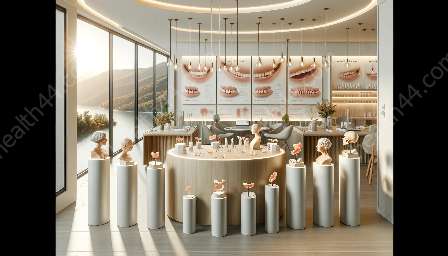Technology plays a crucial role in advancing the design and function of overdentures, leading to significant improvements in patient care and oral health. This article explores the impact of technological advancements on overdentures, including their benefits, latest innovations, and future possibilities.
Benefits of Technology in Overdenture Design
Enhanced Precision and Accuracy: Through the use of cutting-edge technology such as computer-aided design and manufacturing (CAD/CAM), overdenture design has reached new levels of precision and accuracy. This ensures a better fit and improved function for the patient.
Customization and Personalization: Advanced technology allows for the customization and personalization of overdentures according to the patient's unique oral anatomy. This results in greater comfort and improved aesthetics, ultimately enhancing patient satisfaction.
Efficient Workflow: Digital workflows enabled by technology streamline the design and production processes, reducing lead times and enhancing efficiency. This not only benefits the dental practitioners but also allows patients to receive their overdentures in a more timely manner.
Innovations in Overdenture Technology
3D Printing: Additive manufacturing techniques, particularly 3D printing, have revolutionized the production of overdentures. This technology allows for the creation of highly precise and intricate overdenture components, leading to improved overall fit and function.
Implant Planning Software: Advanced software solutions for implant planning have enabled more precise placement of dental implants to support overdentures. This results in improved stability and longevity of overdentures, offering enhanced functionality and patient satisfaction.
Digital Scanning and Impression Techniques: Digital scanners and impression techniques have replaced traditional manual methods, offering a more comfortable and accurate experience for patients. This digital approach also facilitates seamless communication between dental professionals and dental laboratories, resulting in better collaboration and superior treatment outcomes.
The Future of Overdenture Technology
Looking ahead, the role of technology in overdenture design and function is poised to further evolve. Innovations such as virtual reality (VR) and augmented reality (AR) may be integrated into the design and fitting processes, providing a more immersive and accurate experience for both practitioners and patients. Additionally, advancements in materials science and digital dentistry will continue to drive improvements in the durability, aesthetics, and performance of overdentures.
Technology continues to shape the field of dentures, with a clear focus on enhancing patient comfort, function, and overall satisfaction. By embracing the latest technological advancements and staying abreast of future innovations, dental professionals can deliver superior care and elevate the standard of overdenture design and function.


